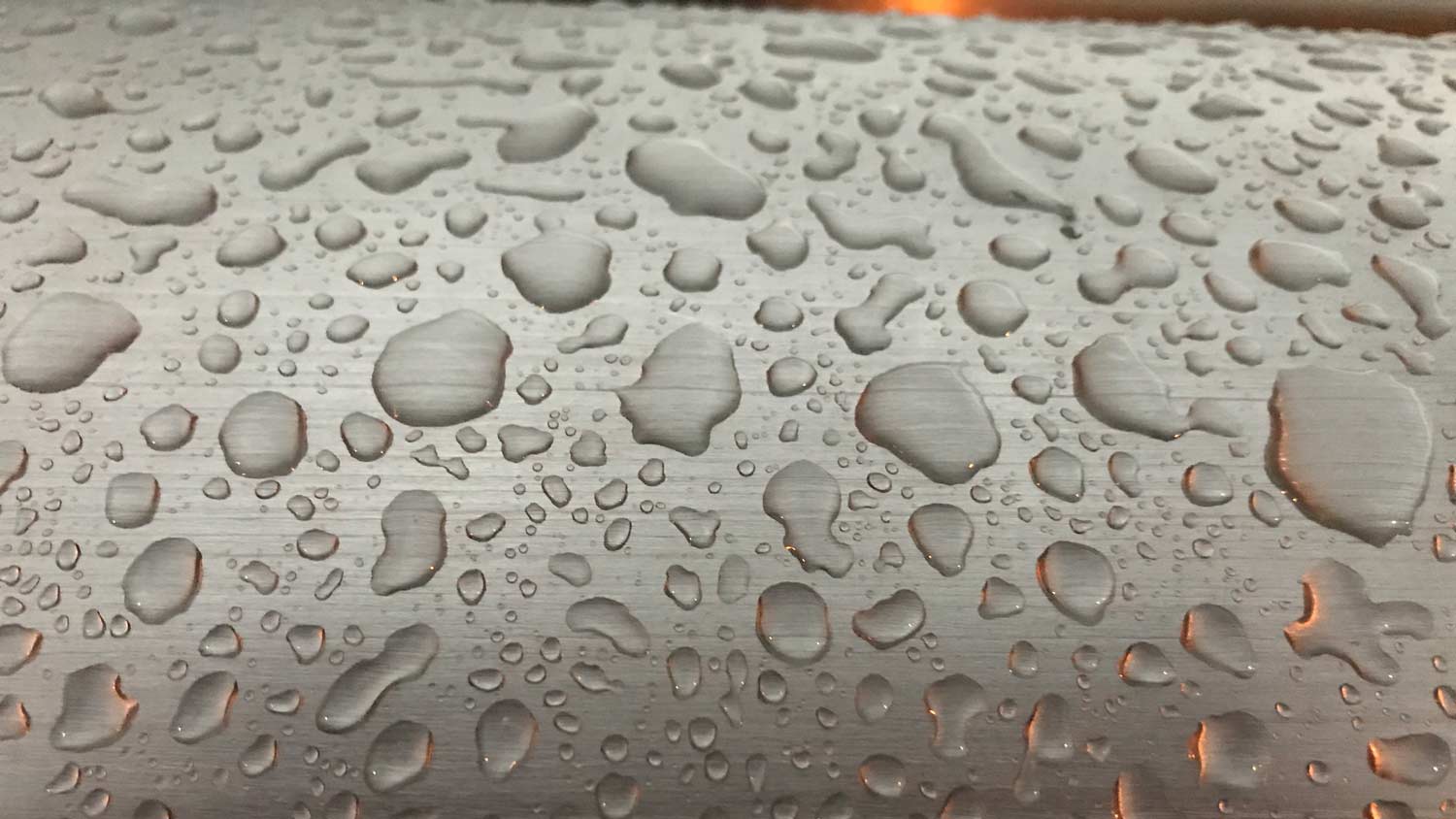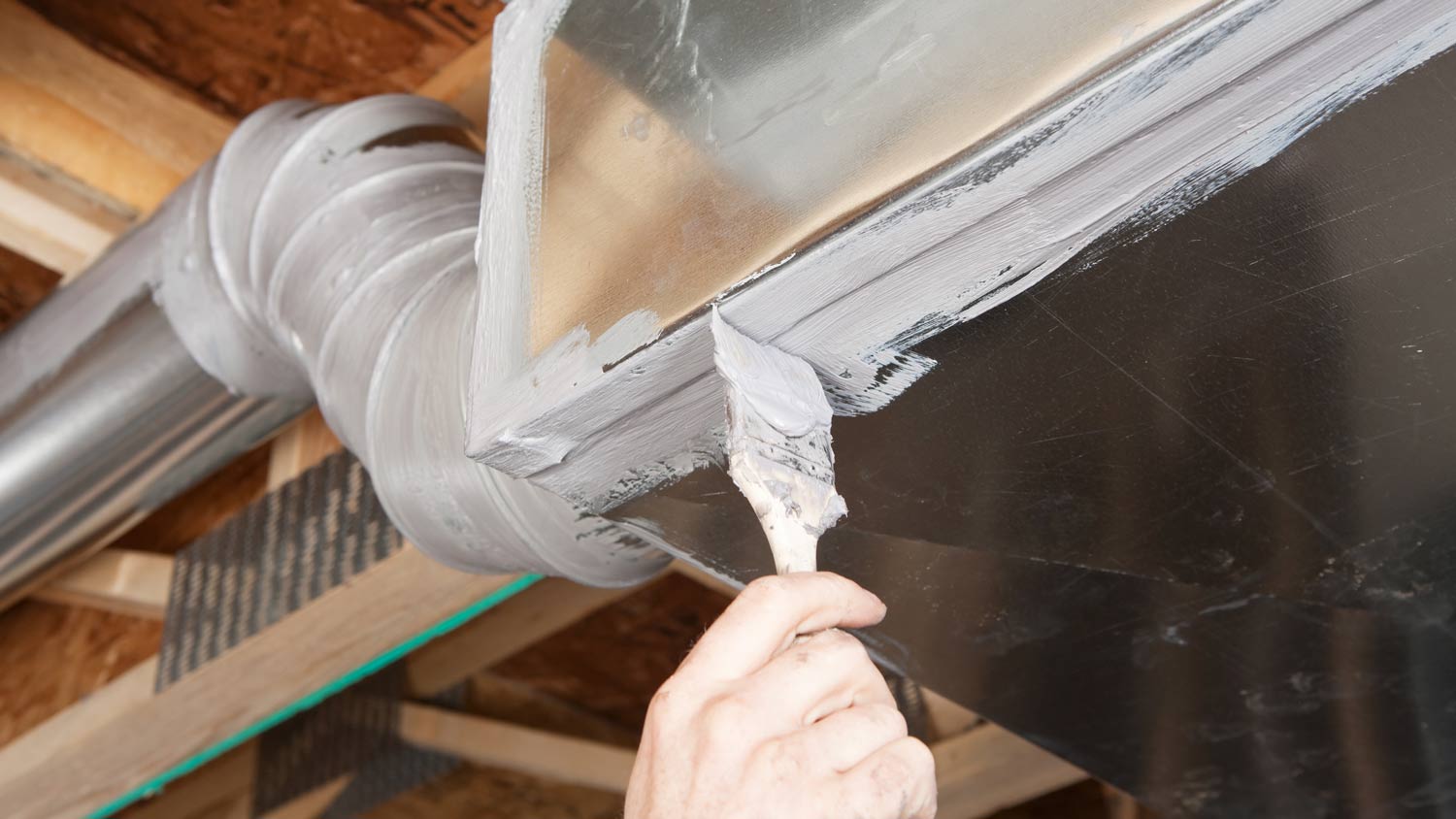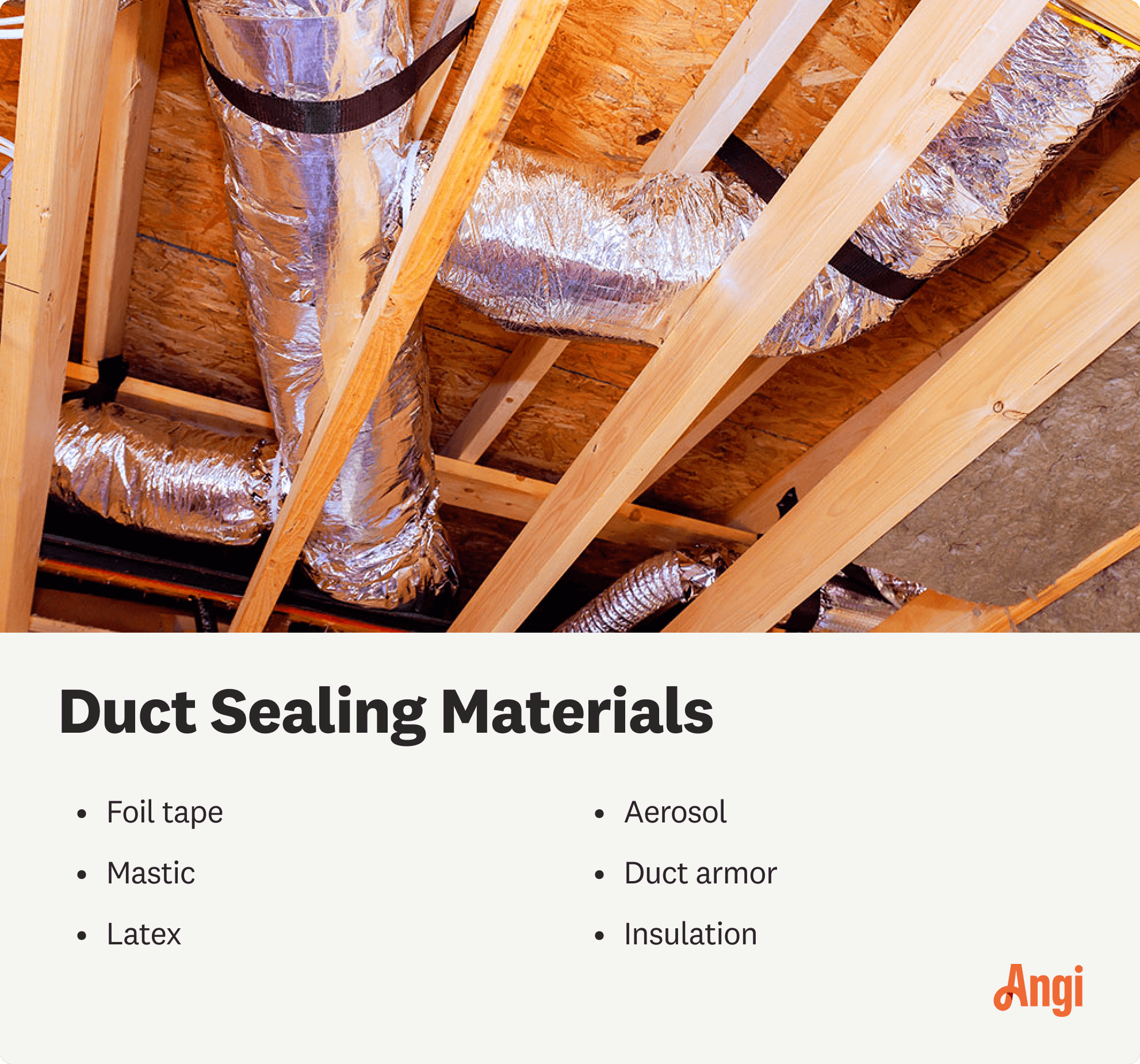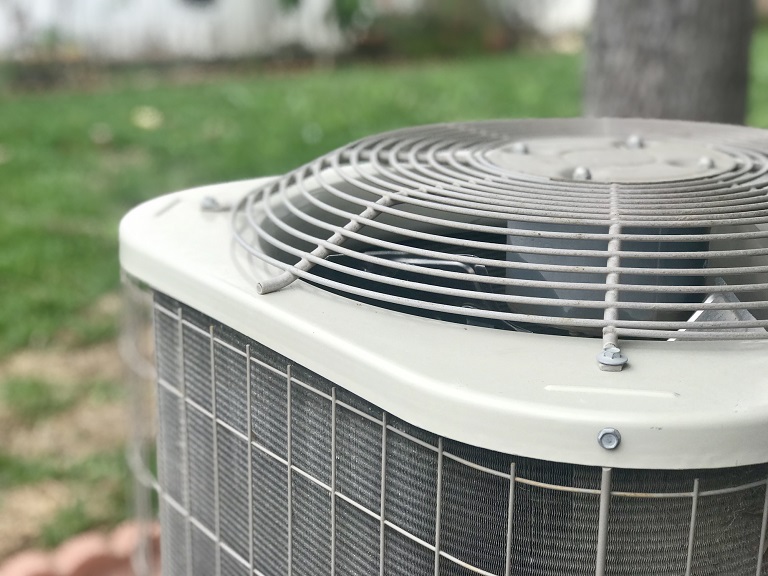
A blower door test can identify air leaks in your home and help boost energy efficiency. Use this blower door test cost guide to see what your test will total.
This is no time to sweat


Lack of insulation, high humidity, and temperature shifts can all cause condensation on your crawl space ducts.
Too much condensation can reduce the efficiency of your HVAC system, lead to mold growth, and even affect the structure of your home.
Regular maintenance and a few tweaks can keep the sweat away.
You hear a drip, drip, drip and it sounds like it's coming from under the house. You take a peek, and you see it: condensation on the ductwork in your crawl space. But don’t fret—there are a few things that make your ducts sweat and some things you can do about it. Here are the most common reasons for condensation on ductwork in crawl spaces.

You're grateful for your air conditioning, which keeps your home at a cool and comfortable 72 degrees on days when the mercury climbs to 90 or higher outdoors. But that much of a temperature difference can be what's making condensation form on the ducts.
Think back to your middle or elementary school science classes. You learned that when you fill a glass with cool water and let it sit at room temperature, condensation forms on the exterior of the glass. The same thing is happening in your ducts, except instead of cool water, cool air is flowing through them.
When that cool air meets the higher temperature inside your crawl space, condensation forms.
Over time, too much moisture on the outside walls of the ducts will encourage mold growth and may even damage the ductwork itself. You can't control the outside temperature and likely don't want to air condition your crawl space. Your best bet is to add insulation to the ductwork to keep the cooler air from coming into contact with the heat.
Contact an installer who does ductwork to find out more about your options for adding insulation. Depending on the age and condition of your ducts, they may recommend replacing everything with insulated flex ducts.
The cost to add ductwork insulation ranges between $1,000 and $2,700. While this may seem high, it’s still less than having to replace your entire HVAC system or repair damage to the structure of your home caused by excessive moisture.
If you live in a humid area, the odds are, your crawl space is humid too, especially in the middle of a hot summer. All that water in the air has to go somewhere, and more often than not, it forms condensation on the exterior of your ductwork.
To keep your ducts from sweating, you need to lower the humidity in the crawl space area. There are two ways to do so. Option one is a temporary fix and involves setting up a dehumidifier in your crawl space. The dehumidifier will pull moisture from the air and collect it in a reservoir. Depending on the model, you may have to empty the reservoir any time it fills up.
Option two is to encapsulate your crawl space so that moist air is less likely to get in. Oftentimes, encapsulating a crawl space involves using a dehumidifier and installing a vapor barrier along the ground, so that moisture can't get in. If the crawl space was vented originally, those vents will be sealed during the encapsulation process.

Small openings in your ductwork or gaps along the seams can allow warm air from the crawl space to seep in, interacting with the cool air flowing through the ducts and causing condensation. If you suspect leaky ducts are the problem, talk to a local professional duct installer about your options.
Your best choice may be to replace damaged flexible ducts that are leaking water. For sheet metal ducts leaking at the seams, having a pro seal the seams may be all you need. The total cost of duct sealing depends on the project size but usually ranges from $0.50 to $1.50 per square foot.

The best way to deal with condensation on ductwork is to prevent it from forming in the first place. These preventive measures can keep condensation at bay in your crawl space.
Insulate the ducts: HVAC ducts will sweat if there’s a marked temperature difference between the crawl space air and the air inside the ductwork. Insulating them can prevent humid air from touching the cool ducts and forming condensation.
Seal cracks: Cracks, gaps, and holes in the ductwork allow air to leak out. It can create condensation when that air comes into contact with the crawl space air. HVAC duct leaks also decrease the system’s efficiency and increase energy bills.
Encapsulate the crawl space: This process seals the foundation vents and prevents humid outside air from entering the crawl space, stopping the formation of condensation on the ducts.
Keep up with maintenance: Annual HVAC maintenance ensures your system functions correctly. A technician will inspect your HVAC unit and ductwork and perform any necessary repairs to keep everything in tip-top shape.
Air duct sealing costs between $500 and $4,000, with homeowners paying an average of $2,250. The exact price depends on the size of the home, the sealing method, the layout and condition of the ducts, and the extent of the leak. After sealing your ducts, you should have a pressure test performed to check that there are no leaks. This will add $200 to $450 to the total cost but can help ensure your ductwork isn’t wasting energy.
You can seal air ducts yourself if you’re handy and have the right tools, supplies, and experience. Labor makes up around 90% of the project's total cost, which means doing the work yourself can be much more budget-friendly.
However, while minor leaks are manageable for a DIYer to patch with duct mastic or foil tape, sealing major ductwork leaks is best left to a professional. Hiring a duct installer near you will ensure your ductwork is properly sealed, so you won’t have to worry about condensation in your crawl space anymore.
This is a small family owned company that will give you excellent service.
A very good company to work with: professional, reasonably priced, and willing to go above and beyond to satisfy the customer. We had rotted wood and new aluminum roof trim installed, and the result is perfect and done on time. I definitely recommend them and will certainly use them for...
Incredible job! I found a leak in my air conditioning and noticed mold growing around the area. Upon realizing this, I immediately called this company and we agreed on a same-day appointment. They took samples for testing and within hours, I received the results with detailed observations. I...
I have had Kennihan do plumbing, heating, air conditioning, hot water heater replacement, etc etc etc. They are like having a whole team in your family! Excellent from the professional service people to the office team to the owners!
The service was excellent! Norwin's trap caught the dangerous bob cat in short order. I am very thankful!
Brandon Burnette did such a great job. I'm so happy I had him as my worker today. Very nice and friendly young man. 10 star in my book.
We had Brandon from DeMarks come out and power wash our siding. The house is 26 years old and had never been washed before. I can not say enough about how hard he worked to get every inch of the house sparkling clean. Not only did he wash the siding, but the soffit, fascia, and gutters as...
We had LHR install a new roof and gutter system. While they were not the cheapest, they were considered the most reliable and fetish for using only high-value products that would last for many years. Additionally, they were highly professional and never tried to push their services or any...
The crew showed up on time and finished the home theater installation as promised. The guy in charge of the team made sure it was done correctly, right down to the smallest detail. Highly recommended!
I spent a long time looking for an accommodating and knowledgeable HVAC professional and Air Knight fulfilled all my criteria for a great service company. Phillip came to me and was quickly able to assess and deal with my air conditioning situation - believe me I contacted a lot of people...
From average costs to expert advice, get all the answers you need to get your job done.

A blower door test can identify air leaks in your home and help boost energy efficiency. Use this blower door test cost guide to see what your test will total.

Whole-house humidifier costs vary based on the type and size of the unit, along with other factors. The price might be worth it for people living in dry regions.

Factors such as labor and parts impact the final price of repairing a window AC unit. Learn all of the costs associated with window air conditioner repair.

Discover the average air handler replacement cost, including labor and materials, plus expert tips to help you budget and save on your HVAC upgrade.

Discover the benefits of a DIY outdoor wood furnace forced-air system. Cut costs, reduce fire risk, and embrace renewable heat for your home.

Condensation on air vents suggests something is wrong with your HVAC system. Learn how to stop condensation on air vents through preventive measures.